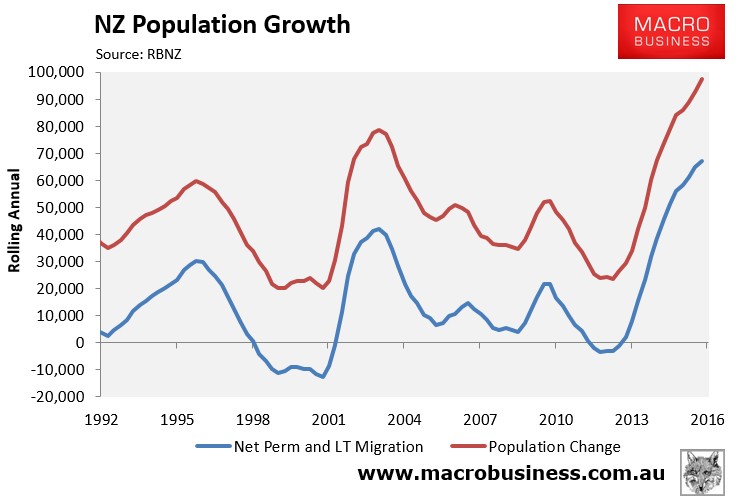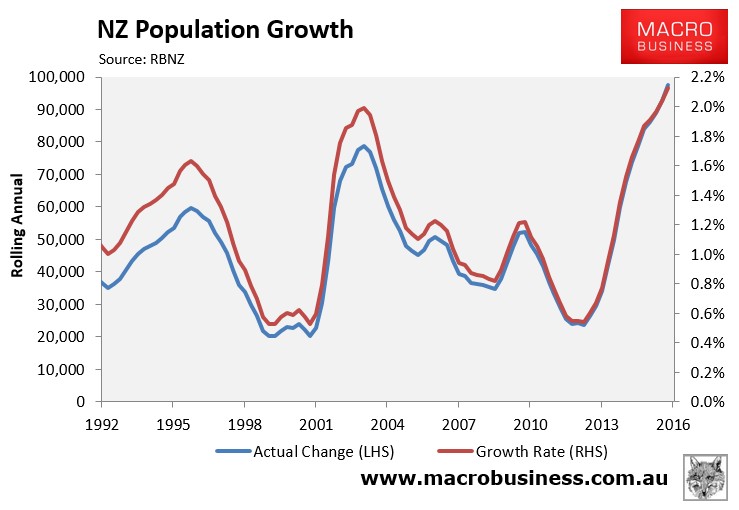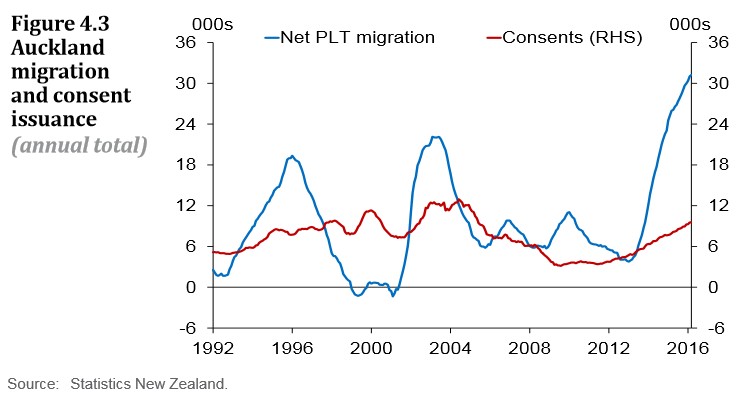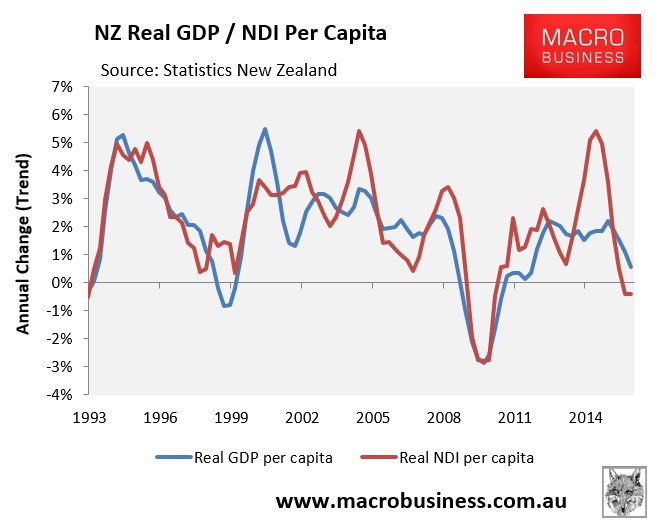Back in April, Bernard Hickey also published a great article questioning whether the New Zealand economy has become too reliant on quantitative drivers of growth, such as immigration, instead of qualitative drivers that boost productivity and ultimately raise living standards.
Over the weekend, Hickey returned with a piece imploring Auckland’s leaders to aim more for growth per capita rather than just growth for the sake of it, which is choking the city and lowering living standards. From Interest.co.nz:
Auckland feels like a boom town at the moment with shortages of houses, hotels, roads, schoolrooms and tradies dominating the conversations at barbecues, bars and on talk-back radio.
It seems like growth is all around and, strictly speaking, that’s true. Auckland’s population is growing at a rate of close to 200 people a day…
So surely any and all growth for Auckland is good?
It’s certainly better than no growth or a recession, but the quality of the economic growth matters because sometimes growth for the sake of it doesn’t actually make everyone richer in any sort of sustainable way…
Output per worker per hour is the most important determinant of wages and wealth in the long run…
Auckland has quite a bad case of the productivity blues. The city has underperformed its own target of 2% growth in output per hour worked for a couple of decades. Output per hour has actually been flat to falling since 2012. Total GDP has grown in the city because of all the extra people working all those extra hours, but output per hour worked hasn’t changed much, which means real wages have barely moved. They’ve certainly gone backwards once adjusted for housing costs, and more importantly, for useful leisure time…
This year’s TomTom travel survey found Aucklanders spent an extra 158 hours or 20 working days a year travelling to work in 2015 because of congested traffic systems, which was 7% worse than it was in 2008.
Auckland may feel and look like a boom town, but quantity does not necessarily equal quality, and that’s clear in the woeful productivity figures and in commuting times and in after-housing-cost disposable incomes.
There’s no getting around the fact that New Zealand has become the new population ponzi king. In the year to March 2016, New Zealand added a record 97,400 people, 69% of whom were via net migration:

The rate of population growth in New Zealand – 2.13% in the year to March 2016 – is also the highest since at least the 1970s:

According to the RBNZ, around half of this immigration has flowed into Auckland, and has far out-pacing dwelling approvals, thus pushing-up house prices beyond reach of the average Kiwi:

Meanwhile, the most recent national accounts release revealed that per capita national disposable income (NDI) growth has turned negative, falling by a combined 0.9% over six quarters versus 1.2% growth in per capita GDP (see next chart).

So, in addition to causing great strain on infrastructure and housing, along with real wages that are falling in Auckland, national income is also falling in per capita terms – a situation that will only worsen should dairy prices weaken further.
Much like Australia, New Zealand is wrongly pursuing quantitative ponzi growth. This might be good for the aggregate economy and big business (i.e. more inputs equals more outputs and more customers for business), but it also represents a step backwards in living standards for the average Kiwi.

